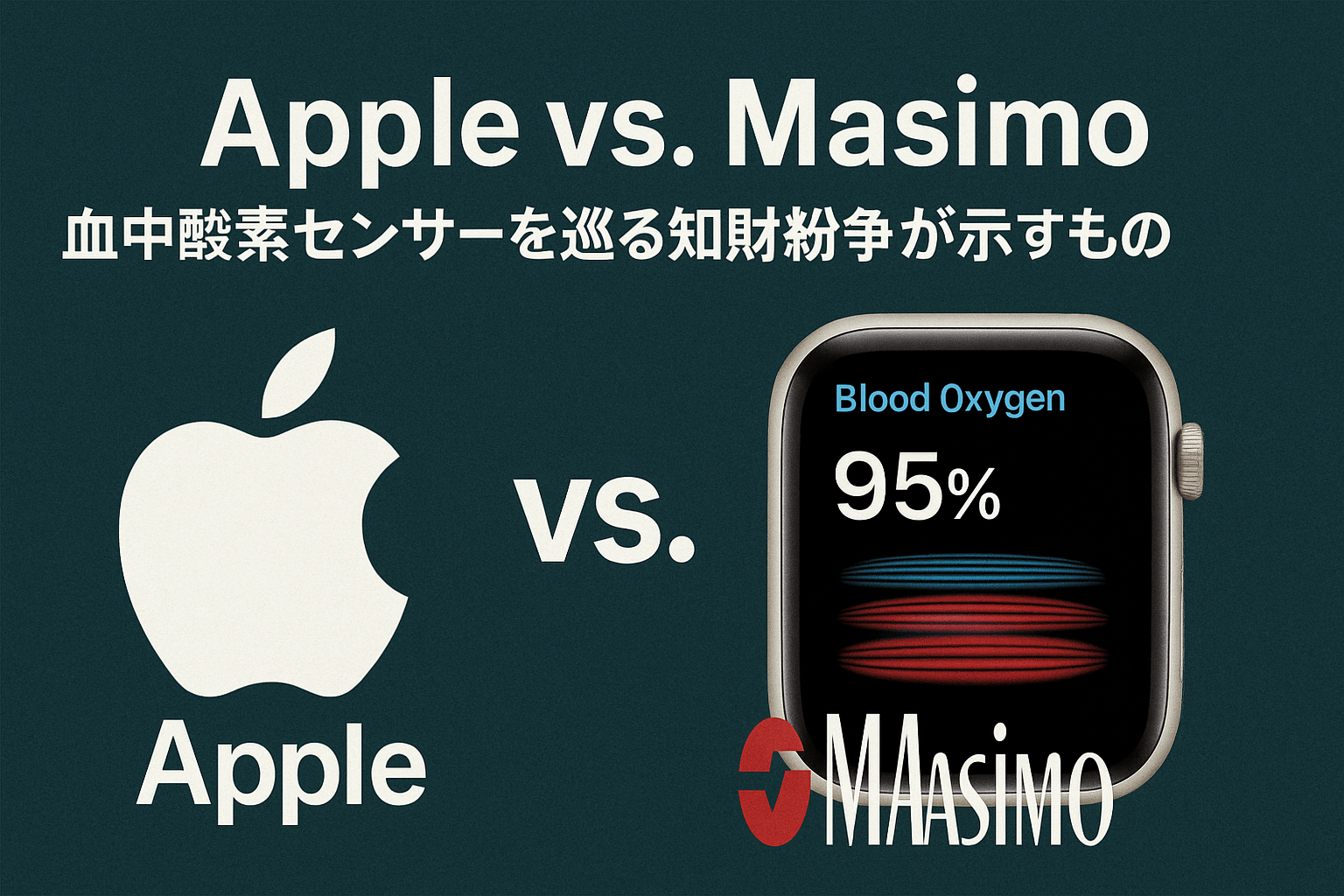The news that Apple has been ordered to pay approximately $984 million in a lawsuit over the Apple Watch’s blood oxygen sensor is more than just a story about “a massive damages award.” It highlights once again the complexity of technology and intellectual property strategies in today’s wearable device market.
Below, I examine the background and essence of this dispute, its strategic implications for the companies involved, and potential developments going forward.
The Prolonged Conflict Between Apple and Masimo
Although the core of this lawsuit is the alleged “patent infringement relating to blood oxygen sensors,” the conflict between the two companies has been ongoing since the late 2010s.
Masimo’s Claims
- Apple headhunted Masimo’s medical engineers
- Apple improperly used pulse oximetry technology in the Apple Watch
- The ITC issued rulings in favor of Masimo, at one point even imposing an import ban on the Apple Watch
Apple’s Counterarguments
- The relevant patents had already expired
- The technologies in question are outdated and unrelated to modern wearable design
- Apple countersued, claiming Masimo’s smartwatch infringed Apple’s patents—and won that case
Thus, the dispute carries symbolic weight as a battle over “who holds the legitimate lineage of technological development.”
Why the Issue Escalated to Feature Removal on the Apple Watch
In 2023, Apple Watch Ultra 2 and Series 9 sales were actually halted following an ITC ruling. It is extremely rare for Apple to stop selling a flagship product in major markets, underscoring how impactful the decision was for the company.
Later, U.S. Customs and Border Protection approved Apple’s “redesigned blood oxygen measurement feature,” allowing the functionality to return in the U.S. market. However, Masimo again filed suit claiming the redesign still infringed its patents, ultimately leading to the massive damages ruling announced this time.
Health-monitoring features are core value drivers for wearable devices. An Apple Watch without blood oxygen measurement risks losing competitive advantage. Apple’s determination to preserve this function led to technical redesigns—changes that ultimately triggered yet another round of litigation.
What It Means That the Jury Found Infringement Beyond the Blood Oxygen Sensor
The ruling concluded that Apple not only infringed patents relating to the blood oxygen sensor but also violated Masimo’s patents regarding “training modes” and “heart rate notification functions.”
This is significant.
It can be interpreted as an expansion of the scope of patent infringement from:
- a single sensor technology
to
- algorithms and notification features that shape the entire user experience (UX)
As wearable technology evolves beyond “measurement” into “feedback and behavioral change,” patent strategies covering the entire UX become increasingly critical.
Masimo is not merely protecting medical IP—it is challenging the very UX foundation of the Apple Watch. This is a defining aspect of the current dispute.
The “Double Standard” Dynamic in Apple and Masimo’s Legal Battles
What makes the situation particularly interesting is that Apple has separately sued Masimo—and won.
In summary:
- Masimo → Apple: Masimo wins (the ~$984 million judgment)
- Apple → Masimo: Apple wins (Masimo smartwatch patent infringement)
Each company has sued the other and won.
This is not a simple “thief vs. victim” narrative. Instead, it reflects the reality that the wearable market spans broad technological domains, creating overlapping patent territories as both companies innovate in the same space.
Why the Dispute Has Become So Large—Three Underlying Factors
IP in medical and healthcare fields is extremely strict
Patents related to life and health have finely defined scopes, and infringement is often judged more rigorously.
Wearables represent a key growth sector
Both Apple and Masimo see healthcare as a major future revenue source, making this space non-negotiable.
User experience is a fusion of software and hardware
With tight integration among sensors, algorithms, notifications, and apps, boundaries around what constitutes a patentable technology can easily blur.
What Comes Next: Apple Will Appeal, and the Battle Will Likely Continue
Apple has already announced its intention to appeal, making it highly likely that the legal fight will drag on.
Potential developments include:
- A possible reduction in damages during the appeals process
- Additional review regarding the legality of the “redesigned” features
- Potential out-of-court settlement negotiations
- Apple strengthening its proprietary sensor technologies to eliminate any reliance on Masimo patents
Given that health-related features are central to Apple’s product strategy, retreat is not an option.
Masimo, on the other hand, has gained major credibility as a medical technology company after winning against Apple.
The “IP Wars” of the Wearable Era Will Only Intensify
This ruling is not simply a defeat for Apple; it symbolizes a maturing wearable market where competition for intellectual property is escalating.
Sensor technologies, algorithms, UX, medical reliability—
all are now sources of competitive advantage and simultaneously objects of patent protection.
The Apple–Masimo litigation may be only the opening chapter of a new era of competition.
We will have to keep a close watch on how the battle unfolds.

